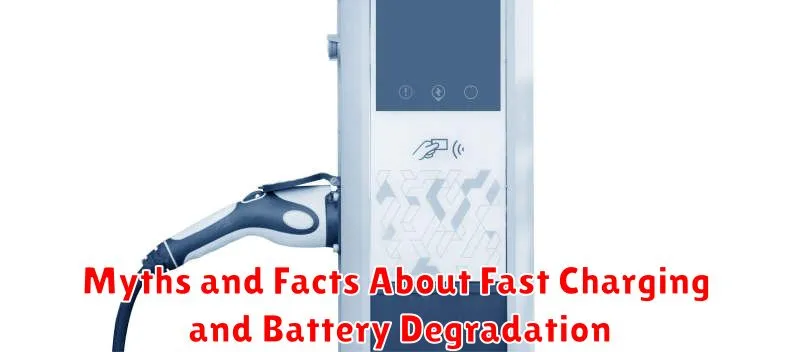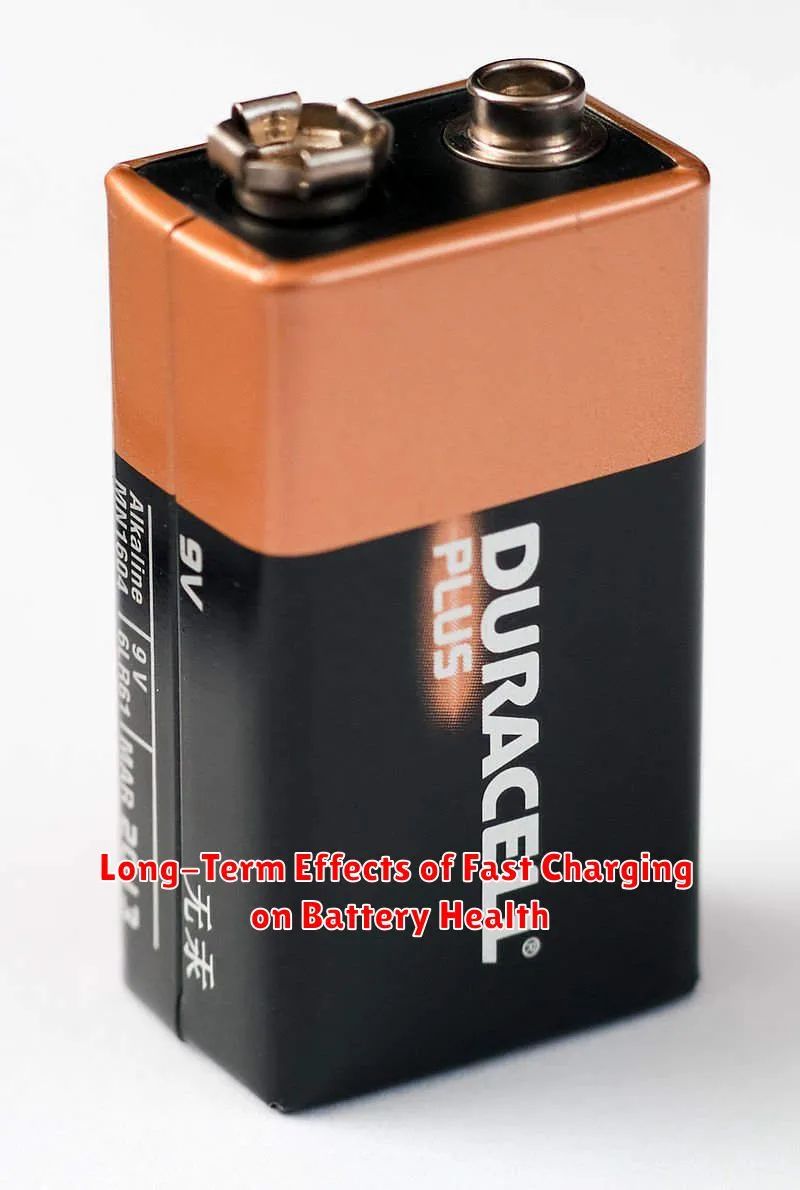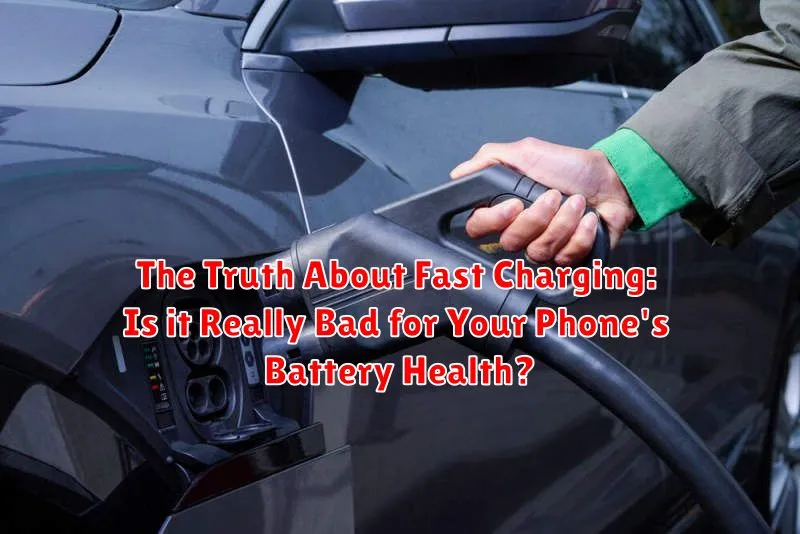In today’s fast-paced world, fast charging has become an indispensable feature of our smartphones. We rely on it to quickly power up our devices, ensuring we stay connected and productive. However, a persistent concern lingers: is fast charging truly detrimental to our phone’s battery health? The internet is rife with conflicting information, leading many users to question the long-term impact of this seemingly convenient technology. This article aims to delve into the truth about fast charging, separating fact from fiction and providing a comprehensive understanding of its effects on your smartphone’s battery.
The fear of degrading our phone’s battery prematurely is a common one, fueled by anecdotal evidence and a lack of clear, scientific explanations. Does the increased heat generated during fast charging significantly shorten the lifespan of our batteries? Are there specific fast charging protocols that are safer than others? We will explore the science behind lithium-ion batteries, the technology that powers most modern smartphones, and examine the different fast charging standards to determine whether fast charging is genuinely harmful to your device’s longevity. Prepare to uncover the real impact of fast charging and learn how to optimize your charging habits for the best possible battery health.
What is Fast Charging and How Does it Work?
Fast charging is a technology that allows your smartphone or other devices to charge at a faster rate than standard charging methods. It achieves this by increasing the power delivered to the device, measured in watts (W).
Standard USB charging typically provides 5W of power. Fast charging, on the other hand, can deliver significantly more power, often ranging from 15W to over 100W, depending on the technology and device capabilities.
The basic principle involves increasing either the voltage (V) or the current (amperes, A) delivered to the battery. However, modern fast charging systems intelligently manage both voltage and current to optimize charging speed while protecting the battery from overheating or damage. This is often accomplished through communication protocols between the charger and the device to negotiate the optimal charging parameters.
Understanding Different Fast Charging Technologies (e.g., USB Power Delivery, Quick Charge)
Several fast charging technologies are available, each employing distinct methods to deliver higher power to your device. Understanding these technologies is crucial for comprehending their impact on battery health.
USB Power Delivery (USB PD)
USB PD is a versatile charging standard capable of delivering up to 100W of power. It negotiates the optimal voltage and current between the charger and the device, making it suitable for a wide range of devices, from smartphones to laptops. USB PD is characterized by its adaptability and efficient power delivery.
Qualcomm Quick Charge
Quick Charge, developed by Qualcomm, is another widely used fast charging technology. It increases the voltage to deliver more power, enabling compatible devices to charge much faster than with standard chargers. Different versions of Quick Charge exist, each offering progressively faster charging speeds.
While both technologies achieve the same goal—faster charging—they operate differently and require compatible devices and chargers to function optimally. It’s essential to use the correct charger for your device to ensure efficient and safe charging.
Does Fast Charging Generate More Heat?
Yes, fast charging inherently generates more heat compared to standard charging. This is due to the higher wattage (power) being delivered to the battery in a shorter amount of time. The process of converting electrical energy to chemical energy within the battery is not perfectly efficient, and some energy is lost as heat.
The amount of heat generated can vary depending on several factors, including:
- Charging technology: Different fast charging standards (e.g., USB Power Delivery, Quick Charge) may have varying levels of efficiency and heat generation.
- Ambient temperature: Charging in a warm environment will exacerbate heat build-up.
- Phone’s design: Some phone models are better equipped to dissipate heat than others.
While some heat generation is normal and expected during fast charging, excessive heat can be detrimental to battery health. Most modern smartphones have built-in thermal management systems to mitigate this risk. These systems may throttle charging speeds or temporarily halt charging to prevent overheating.
Impact of Heat on Battery Lifespan
Heat is a well-documented enemy of lithium-ion batteries, the type commonly found in smartphones. Elevated temperatures accelerate the chemical reactions within the battery, leading to faster degradation and a reduction in its overall lifespan.
Specifically, prolonged exposure to heat can cause:
- Capacity Loss: The battery’s ability to hold a charge diminishes over time.
- Increased Internal Resistance: This hinders the flow of current, reducing performance and potentially causing overheating.
- Swelling: In extreme cases, the battery can physically swell, posing a safety risk.
While occasional exposure to moderate heat is generally unavoidable, minimizing prolonged exposure to high temperatures is crucial for preserving battery health. This includes avoiding leaving your phone in direct sunlight, using it excessively during charging, and keeping it in a well-ventilated area.
Myths and Facts About Fast Charging and Battery Degradation

Several misconceptions surround fast charging and its impact on battery health. Let’s debunk some common myths and present the facts:
- Myth: Fast charging always damages the battery.
- Fact: Modern smartphones have built-in battery management systems that regulate charging speed and voltage, preventing overcharging and excessive heat.
- Myth: It’s best to always charge your phone slowly.
- Fact: While slow charging can be gentler, consistently avoiding fast charging is unnecessary. The battery management system adapts the charging process.
- Myth: Leaving your phone plugged in overnight will ruin the battery.
- Fact: Once your phone reaches 100%, the charging circuit stops drawing power, preventing overcharging. However, maintaining a charge at 100% for extended periods can generate minimal heat, potentially contributing to gradual degradation over a long time.
Truth: Battery degradation is inevitable over time regardless of charging speed. However, adhering to best practices can minimize its impact.
The Role of Charging Adapters and Cables in Fast Charging
The charging adapter and cable play crucial roles in enabling fast charging. The adapter determines the power output, measured in watts (W), that can be delivered to your device. A fast-charging adapter will have a higher wattage rating compared to a standard charger.
The cable must also be capable of handling the increased power. Using a cable that isn’t designed for fast charging can lead to slower charging speeds or even damage to the cable or device. Look for cables that are specifically rated for fast charging and support the relevant charging protocols, such as USB Power Delivery (USB-PD).
Using the correct adapter and cable combination is essential for achieving optimal fast charging speeds and ensuring the safety of your device. A mismatched combination can result in inefficient charging, slower charging speeds, or even potential safety hazards.
How to Monitor Your Phone’s Battery Health
Regularly monitoring your phone’s battery health is crucial for understanding its performance and longevity. Fortunately, most modern smartphones offer built-in tools and features to help you track this.
Built-in Battery Health Tools
iOS Devices: Navigate to Settings > Battery > Battery Health (Beta). Here, you’ll find the “Maximum Capacity” percentage, which indicates the battery’s capacity compared to when it was new. A lower percentage signifies degradation.
Android Devices: The availability and location of battery health information vary depending on the manufacturer and Android version. Some manufacturers provide built-in tools. If not, consider using third-party applications.
Third-Party Applications
Several reliable third-party apps are available on app stores that provide detailed information about your battery’s health, including its temperature, voltage, and charging cycles. These apps can offer insights not available through the built-in tools.
Tips for Optimizing Battery Life While Using Fast Charging
While fast charging is convenient, employing certain strategies can help mitigate potential adverse effects on your battery’s longevity. These practices focus on managing heat and charging habits to ensure optimal battery health.
Practical Tips:
- Avoid Extreme Temperatures: Do not charge your phone in excessively hot or cold environments. Optimal charging temperatures are typically between 20°C and 30°C (68°F and 86°F).
- Partial Charging: Consider charging your phone in short bursts rather than consistently going from near-empty to 100%. Aim for charging between 20% and 80% to reduce battery stress.
- Use the Correct Charger: Utilize the charger and cable that came with your phone, or a reputable third-party alternative specifically designed for your device.
- Remove the Case: If you notice your phone getting excessively warm while charging, remove the case to improve heat dissipation.
By implementing these straightforward techniques, you can maximize the lifespan of your phone’s battery while still taking advantage of the speed and convenience that fast charging offers.
When Should You Avoid Using Fast Charging?
While fast charging is generally safe for your phone’s battery, there are specific scenarios where it’s best to opt for standard charging to potentially prolong battery health.
- Extended Periods of Inactivity: If you plan on leaving your phone plugged in for an extended duration after it reaches 100%, such as overnight, using a standard charger is preferable. The trickle charge from fast charging can generate unnecessary heat over time.
- High Ambient Temperatures: Avoid fast charging in already warm environments, such as direct sunlight or a hot car. The combined heat from the environment and fast charging can excessively stress the battery.
- When the Battery is Already Warm: If your phone is already warm from heavy usage (gaming, video streaming), wait for it to cool down before initiating a fast charge.
- When Using Unreliable Chargers/Cables: Always use chargers and cables that are certified and from reputable brands. Cheap or counterfeit accessories may not have the necessary safety features to regulate voltage and current, potentially damaging your battery.
Long-Term Effects of Fast Charging on Battery Health

The long-term effects of fast charging on battery health are a subject of ongoing discussion and research. While convenient, consistently using fast charging methods can contribute to the gradual degradation of a phone’s battery over time.
Here’s what to consider:
- Accelerated Aging: The increased heat generated during fast charging can accelerate the chemical aging process within the battery, potentially reducing its overall lifespan.
- Reduced Capacity: Over extended periods, the maximum charge capacity of the battery may decrease more rapidly compared to standard charging. This means your phone might not hold a charge for as long as it used to.
- Number of Charge Cycles: Batteries have a limited number of charge cycles before their performance noticeably degrades. Fast charging could potentially lead to reaching this cycle count sooner, especially if it consistently generates excessive heat.
It’s important to note that modern smartphones have built-in battery management systems designed to mitigate the negative effects of fast charging. However, adopting best practices, such as avoiding extreme temperatures and occasionally using slower charging methods, can further help preserve your phone’s battery health in the long run.

